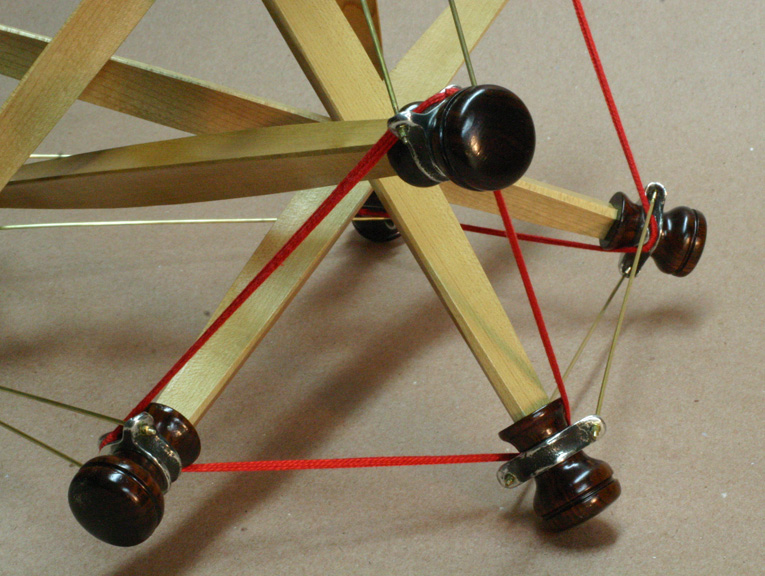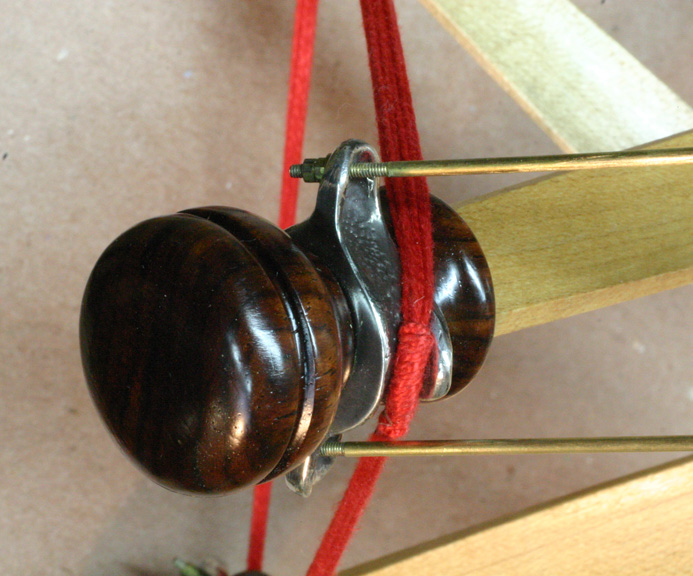






In early September, 2001, the College of the Redwoods Fine Woodworking program had a 20th anniversary show, inviting all former students and staff to participate. I had been an assistant teacher the first year the school opened, and felt honored to still be considered in that group of craftsmen and women. I hadn't been doing the kind of fine joinery the school is known for in quite awhile, and my woodworking had pretty much devolved to hobby status, as I was working full time as an engineer. Yet I wanted to participate. I finally settled on a sculptural piece, that I knew would be unlike anything else submitted to the show.
Tensegrity is an engineering concept that was popularized by Buckminster Fuller. It is a structure where the elements are in pure tension or pure compression. Such a combination of sticks and wire can produce a solid construction, even though the compression elements, the sticks, are not connected to each other, and seem to float. They are connected through the tension elements, the wires.
I chose a simple shape, a tetrahedron, which consists of four triangles, like a pyramid with a triangular base. It is the simplest stable solid shape, but I made the elements elaborate, and is decomposed at the tips. The compression parts, or struts, are Rock Maple, planed with a curved bottom plane, so that the sides of the triangular cross section are concave. They are tapered toward the ends, and finish off in turned tenons. Some of the tension elements are brass rods, threaded on each end, and tightened with 2-56 nuts. Other tension elements are colored cotton cords. The intersections between these parts are cast pewter shapes, inspired by the form of vertebrae. The tips of the struts are finished with turned Coca-Bola caps, for color.






